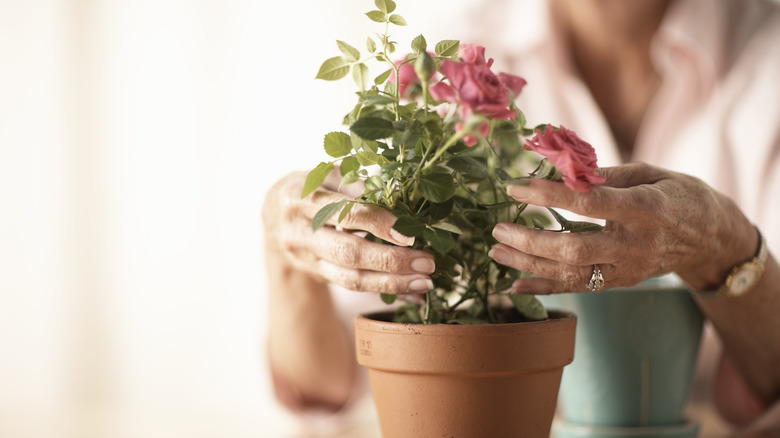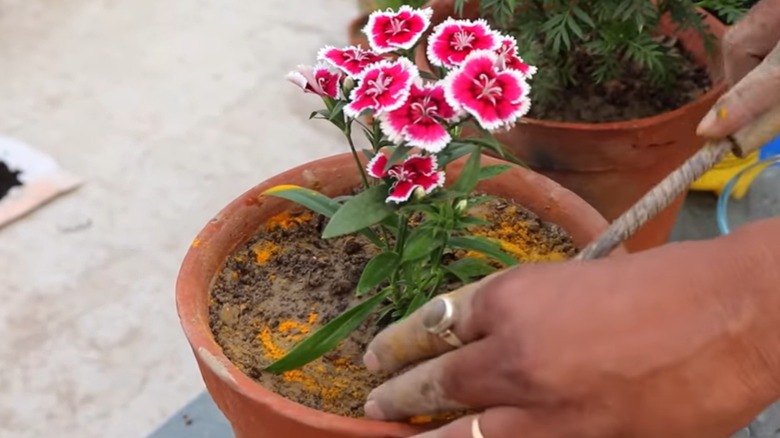If You Notice A Nick On A Beloved Plant, Reach For A Popular Spice
Spotting a scratch on a plant is enough to have any plant parent trawling the web, looking for solutions. However, don't splurge on any expensive ointments just yet. You probably already have the miracle cure in your kitchen's spice rack.
As much as we'd like to think our plant parenting abilities are enough to keep our fiddle-leaf figs and sword ferns from harm, the reality is they're always susceptible to injury from pets, pruning, and pests. However, many of those injuries can be healed. And, sometimes, the same things known to help our own injuries are just as effective on plants. Drum roll, please: This is a job for turmeric.
It's long been said that turmeric has some serious health benefits. It's both anti-inflammatory and antiseptic — and just as that works for human wounds, it can do wonders for plants, too. So, just how should you go about using the spice to help your plants bounce back from pets with a penchant for knocking them over, or from the pests that wreak havoc on them? As it turns out, using turmeric on your plants isn't just affordable, effective, or natural — it's easy, too.
Use turmeric to create a paste for wounds
Whether your plants are injured thanks to your pets' influence, someone walking a little too close to them, or even some well-intentioned pruning, applying a turmeric paste to the affected areas is a great way to get them back to health. All you'll need, aside from turmeric powder, is a little water.
First thing's first, make the paste. To do that, start by mixing a little water with turmeric powder. The goal is to create a thick paste, so go easy on that water ratio. From there, apply the paste to the affected areas, et voilà! Your plants are on the path to healing.
As for how to apply the mixture, thoughts on the most effective route are varied. Balcony Garden Web suggests applying the mixture to the wounds and calling it a day (via YouTube). However, Garden Lovers Club recommends taking things a step further. After applying the mixture to the wounds, wrap it up with a cloth. As the outlet explains, this creates a kind of poultice, and can speed up healing. We'll leave that up to you.
Sprinkle it over the plant in powder form
If the damage you're seeing on your plants looks more like something has been eating them and less like a man or pet-made injury, it can be tempting to break out chemical pesticides. However, with turmeric, you'll ward off bugs and help your plant heal. As a bonus, this hack is even easier than the paste option.
The next time you suspect insects may be taking to your plants, sprinkle some turmeric powder in the soil. Don't go overboard, here: just one tablespoon of turmeric is enough to create a powerful natural pesticide. The best part is, if any of the powder lands on the plant itself, you'll really be doing more good than harm. In fact, in its suggestions on how to help a plant heal from nicks and cuts, Balcony Garden Web notes that just sprinkling powder over the affected area is an effective fix.
So, there you have it: Turmeric is a plant parent's best friend. So, much so, in fact, that you may just think about adding it to your garden, next. And, if you do, you'll know just how to keep it pest and injury free.

